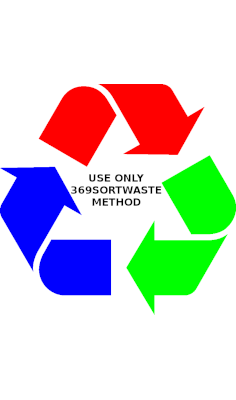


Recycling is the process of changing (waste) materials into new products to prevent the waste of potentially useful materials, reduce the consumption of fresh raw materials, reduce energy consumption, reduce air pollution (from incineration) and water pollution (from landfill) by reducing the need for "conventional" waste disposal and lower greenhouse gas emissions compared to plastic production. Recycling is a key element of modern waste reduction and is the third element in the waste hierarchy of "Reduce, Reuse and Recycle".
All the materials thrown away by the average family that are suitable for recycling include many types of glass, paper, metal, plastic, textiles, electronics and others. Composting or otherwise reusing biodegradable waste such as food or garden waste is also considered recycling. Materials for recycling should be brought to the collection center such as EKOAB369 pavilions and collected from households by a pavilion employee as often as once a day in housing estates with dense multi-story buildings, with the possibility of reducing the frequency to once every 3 days in areas with a predominance of single-family housing, and then sorted, cleaned and moved on to recyclers and then processed into new materials for production.
If necessary, this model consisting of 3 basic containers MIX, BIO, GLASS and 6 waste banks can be flexibly expanded with additional containers. When we want to sort paper selectively from the very beginning because we have a lot of it, we use the Z variable (in this case Z2, because Z1 is sewage waste for septic tank or sewage), i.e. additional sorting. When we have a child or elderly people at home who need diapers, we will place a container in the bathroom for HYGIENE (variable Z3). On the other hand, when we want to sort textiles in large quantities, such a need is also described by the Z4 variable describing optional sorting. In addition, all unusual situations, emergencies such as renovation, or resulting from seasonal changes in the calendar year are taken into account by the Z variable. Remember - e.g.: ash from the furnace or sewage in the septic tank is the "Z" variable from our universal recycling equation.
Use only the 369sortwaste method and within the entire EKOAB369 system to build a proper waste management network. Every move in the area where waste from our households travels must be thought out. The EKOAB369 system will allow us to effectively handle waste and eliminate the problem of waste fraction diversity at source. A 3-step sorting is needed at the beginning before it reaches the recycling center, which collects waste from a specific area with processing capacity. Therefore, 3-step preliminary sorting will make it easier for people in recycling centers to work. Remember! The first step in sorting is the bins inside the rooms, the second step in sorting is the garbage can, the third step in sorting is the EKO AB369 system pavilion. 3 rules. Vortex math is used in this method. We also use knowledge about the Divine Proportion and the golden number Phi = 1.618033.
I encourage you to read the ebook, it is available for download in one of the blog entries or by clicking READ MORE in the section below.
DIAGRAM - CIRCLE AND 10 NUMBERS
This circle with ten numbers in their places is a revolutionary solution for science.
OBJECT-ORIENTED PROGRAMMING
The theoretical development of the equation for this method is based on the concept of objectivity.
THE GOLDEN RATIO
The EKO AB 369 system is based on the Golden Ratio and the Golden Number Phi=1.618033...
3,6,9 IS THE KEY TO THE UNIVERSE
The 369 SORT WASTE method is based on Nikola Tesla's theory- "3,6,9 is the key to the Universe". The linear equation (X + Y + Z) = 18 is its foundation.